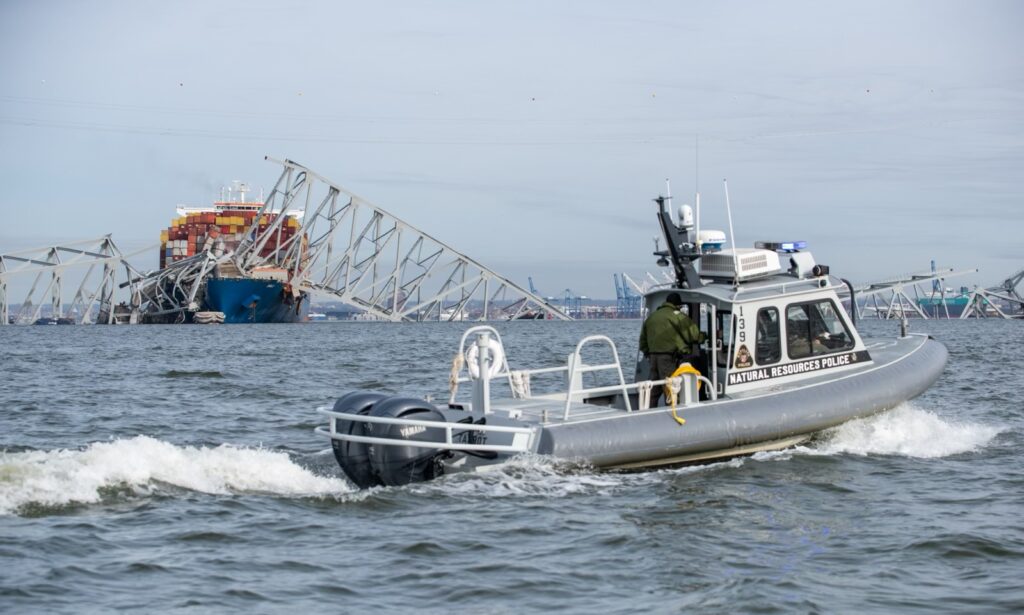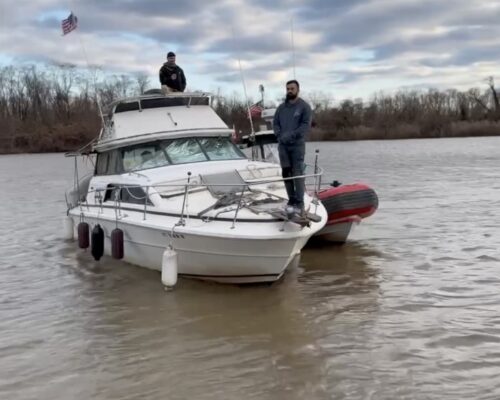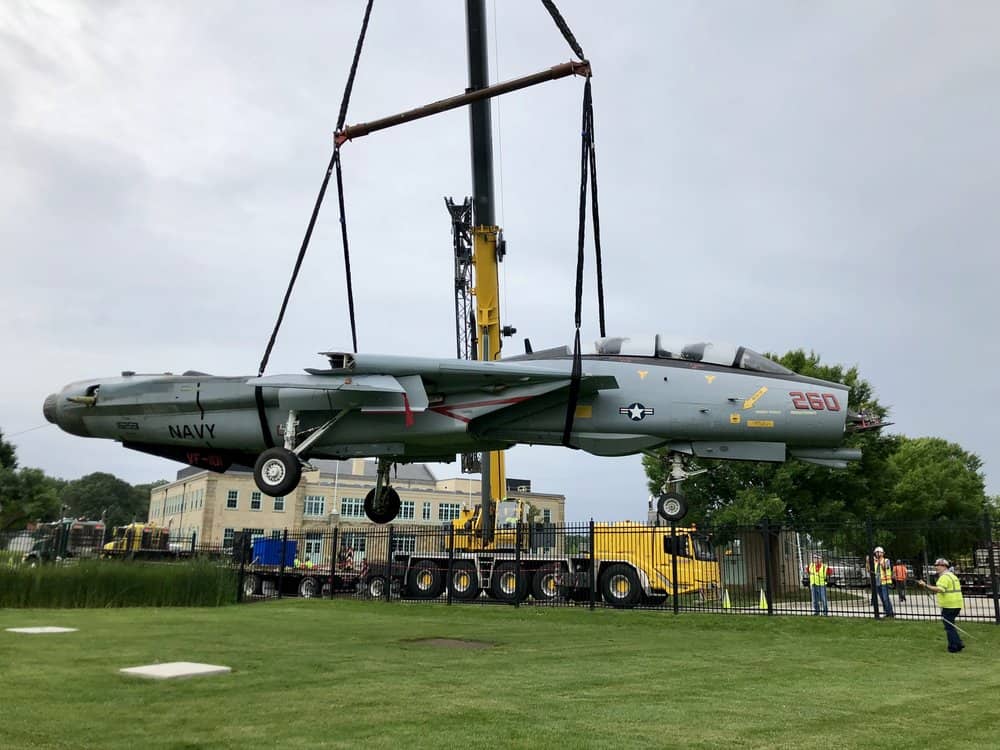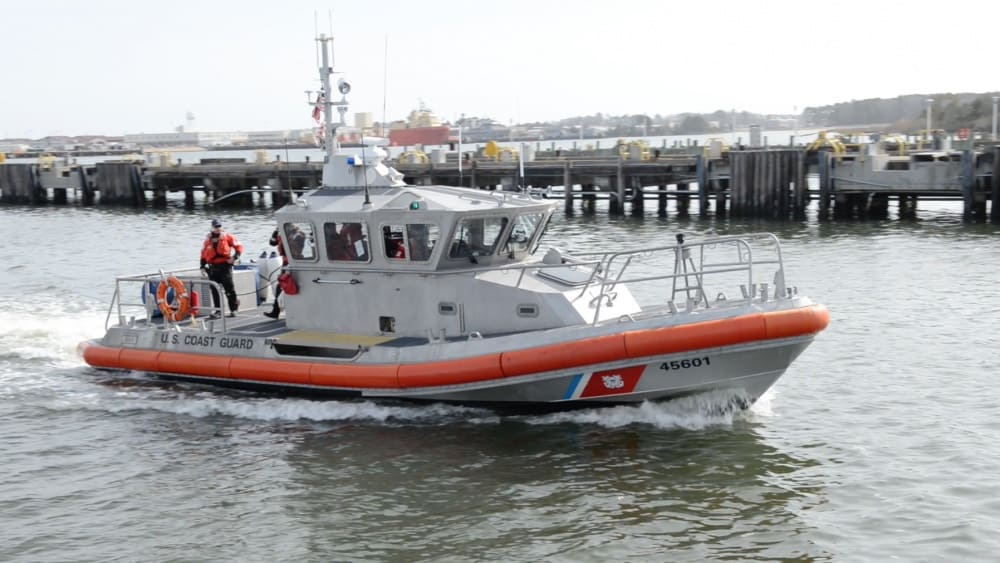One year ago, the Baltimore region suffered the worst transportation disaster on the Bay in recent memory. One year after a ship struck the Key Bridge, destroying a crucial transportation link and killing six men, a commemoration ceremony is being held to honor the victims and the federal, state, and local workers who picked up the pieces.
On Wednesday, March 26, 2025 in Dundalk, Maryland, Governor Wes Moore and Baltimore Mayor Brandon Scott joined members of Congress and the U.S. Senate, Anne Arundel and Baltimore County leaders, community leaders, and the Coast Guard Unified Command that led the Key Bridge response.

A Baltimore Symphony Orchestra performance punctuated the tributes to those affected by the collapse. They ranged from the men working the overnight shift on the bridge who lost their lives to the port workers and the residents on both sides of the bridge that were directly impacted. In an instant, 34,000 travelers per day lost their driving route.
Leaders read the names of the bridge workers who lost their lives: Alejandro Hernandez Fuentes, 35, Dorlian Ronial Castillo Cabrera, 26, Maynor Yasir Suazo-Sandoval, 38, Carlos Daniel Hernández Estrella, 24, Miguel Angel Luna Gonzalez, 49, and José Mynor López, 37. Four of the men were fathers. Senator Chris Van Hollen said, “Their tragic deaths came as they quietly worked on the overnight shift to maintain the bridge that millions of people depended on.” Two more workers that were on the bridge that night survived.
Framed directly in front of the gap where the center spans of the Key Bridge once stretched, Maryland Transportation Secretary Paul Wiedefeld recalled the disbelief that many people felt a year ago, learning that the “Gateway to Baltimore” was gone.
Wiedefeld recognized the MDTA Police officers who quickly stopped traffic and saved civilian lives (Sergeant Paul Pastorek, Corporal Jeremy Herbert, and Officer Gary Kurtz), and the port leaders who helped keep the Port of Baltimore open to every extent possible during the cleanup. The loss of the bridge temporarily cost 8,000 workers their ability to work, but responders made it possible to open smaller port channels on their way to fully reopening the main shipping channel at the Key Bridge site.
Coast Guard Rear Admiral Shannon Gilreath spoke to the more than 1,500 first responders from 55 agencies and organizations that made up the Unified Command response. “What you accomplished recovering the victims, removing the bridge debris, opening alternate channels, removing the ship, and restoring the port of Baltimore was simply amazing and serves as a testament of power to the unity of effort,” Gilreath said.
Governor Wes Moore put the difficulty of the disaster recovery into perspective, pointing out that the channel cleanup was completed in 11 weeks when people would say it would take 11 months. “The steel was so mangled that one small misstep could set us back several weeks or months…the wreckage so sharp that every single rescue operation that took place ran the risk of incurring another casualty,” he said, “But we did not let the what-ifs stop us.”
The process to rebuild the bridge is underway. Moore pledged, “Marylanders of this generation and the next will look up and see the Francis Scott Key Bridge standing tall.”
Indeed, the design of the new bridge has been approved, and “preconstruction activities” are ongoing. The Key Bridge Rebuild organization has been sharing progress updates on the work currently happening. This month, rigs are on the water collecting soil samples during Standard Penetration Tests, which the government calls “a key step used to inform the engineers about the soil’s density, strength, and composition.” Demolition of the remaining wreckage will begin later this year, followed by construction.
Baltimore Community Foundation President and CEO Dr. Dr. Shanaysha Sauls announced that the Maryland Tough, Baltimore Strong Fund, raised by 550 individual and company donations in the wake of the disaster, totaled $16 million. She detailed the groups that will benefit from those funds, including direct relief for the 3,000 affected port workers and truckers, including stocking food pantries and housing assistance
The funds will also go to immigrants in Key Bridge and port-adjacent communities. They will pay for a new fire boat for a volunteer fire department in Baltimore County that was damaged in the response. They will benefit the elderly in Turner’s Stations, families in Brooklyn Park, and small business recovery in Key Bridge communities like Curtis Bay. The Community Foundation announced funds for remembrance of the victim’s families and workers, including an upcoming exhibition at the Baltimore Museum of Industry.
A representative for the families of the victims asked for a moment of silence and read a statement expressing thanks to the first responders for keeping their promise and sparing no effort to bring their loved ones back home. She spoke on behalf of Maria, the wife of Miguel Angel Luna, who showed gratitude to state leaders and the community. She is grateful for the scholarship fund raised for the victims’ children and the financial help that will carry them through the year, and asked for an extension to support them further.
She also urged law enforcement to expedite the investigation into the collapse. “Our six family members would still be alive today and the Francis Scott Key Bridge would still exist as an iconic part of the Baltimore community if not for the reckless and negligent operation of the M/V Dali,” she said, calling for justice to be done.
Chesapeake Bay Magazine will continue to report on the NTSB investigation and the legal action taken by Maryland and the federal government.




